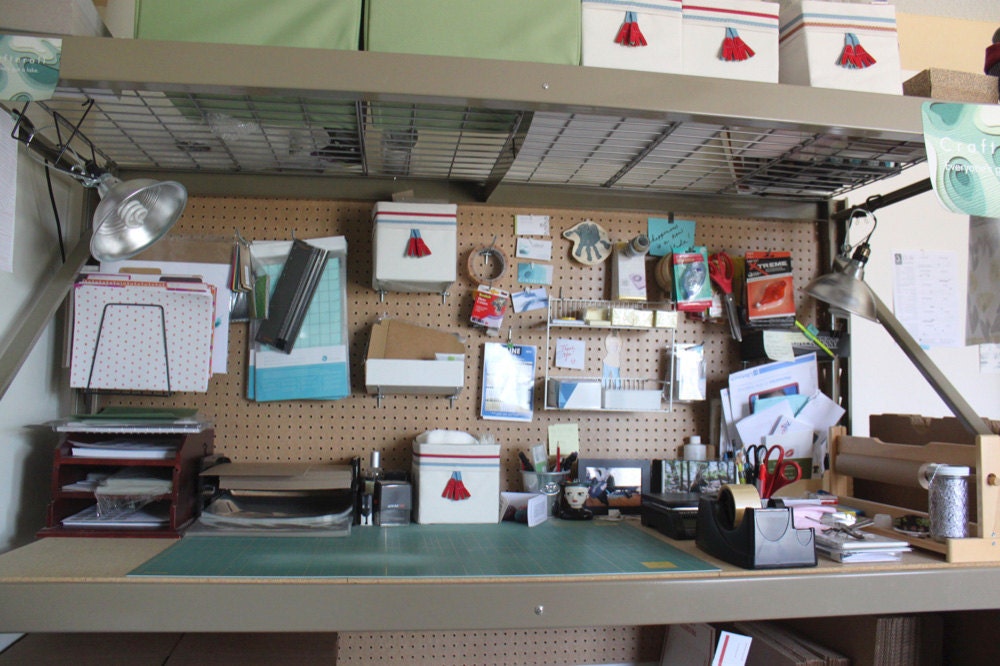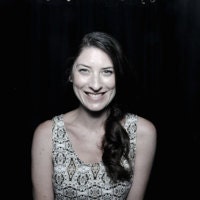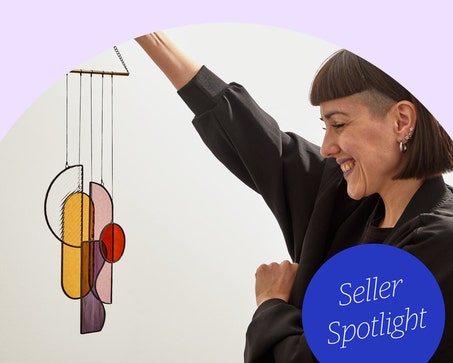Childhood memories and a taste for adventure are all bound up in this Minnesota artist's cut-paper maps.
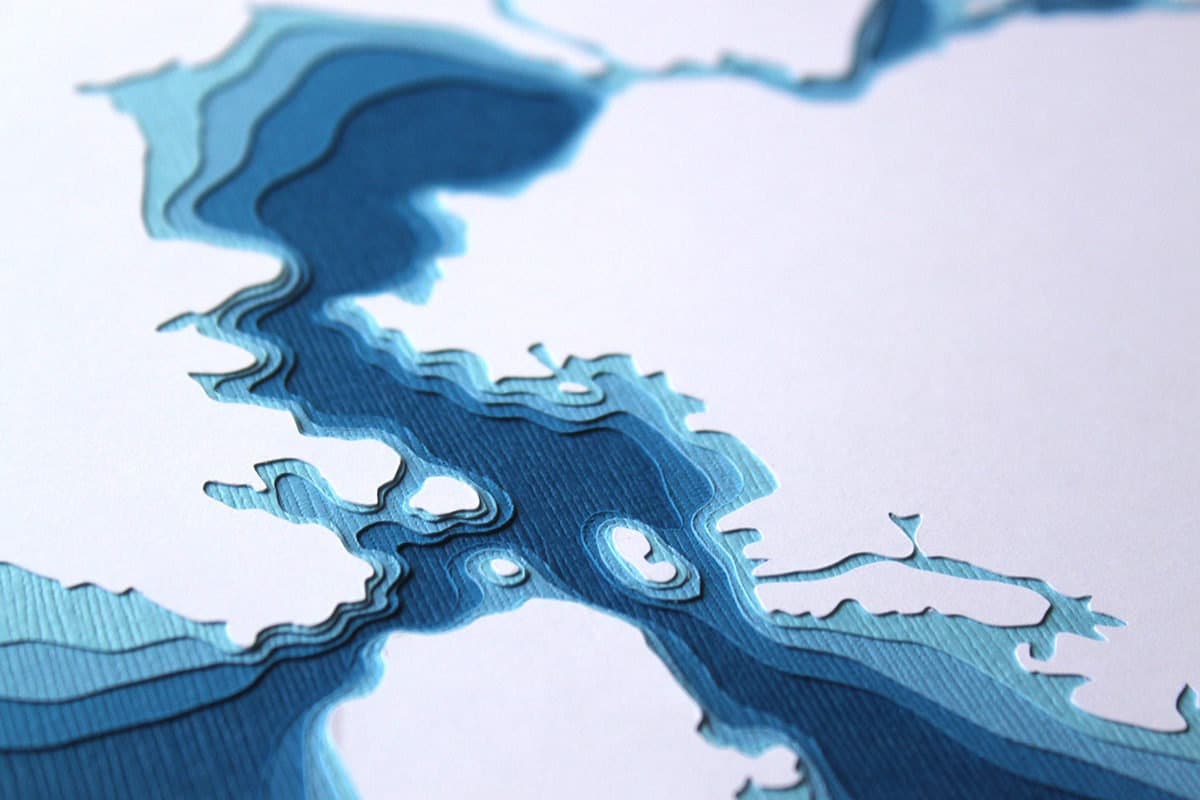
With her three-dimensional cut-paper renderings of lakes, coastlines, and islands, Marnie Karger of the shop Crafterall finds a place where the universal and the personal converge. What started as an abstract exercise in color layering — playing around with cardstock in color-gradient sets she found at the scrapbooking shop where she worked after college — has evolved into a full-time business, shaped by custom orders for sentimental spots and infused with other people’s memories. "Working with somebody's very specific place helps me feel sort of one with humanity; it feels good to be part of someone's very intimate idea of a place and yet connected in a more general, global sense, as well." Although the former high school English teacher’s love for paper craft dates back decades — “I feel like I have been doing stuff with my hands and paper since I could crumple a page,” she says — it wasn’t until a customer noticed a resemblance between one of Marnie’s abstract pieces and her own hometown lake that she dipped her toe into designing and crafting cut-paper lakes. Read on to learn how Marnie charted a new creative landscape for herself, and shop the Crafterall collection here.
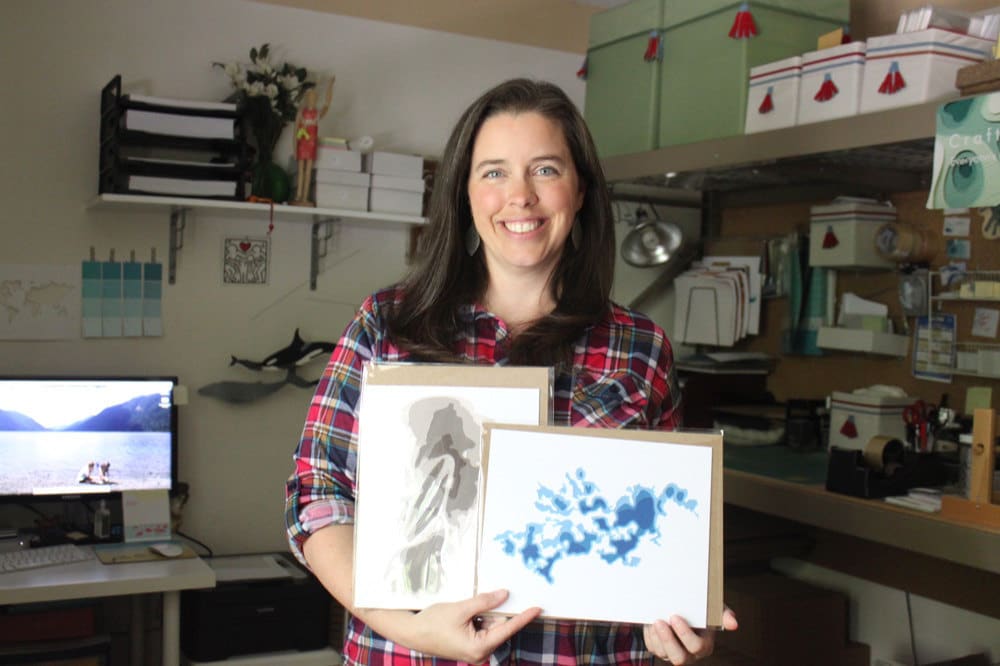
What was the first paper-cut map you made, and what inspired you to do it?
It was a map of a funky-looking lake called Deer Lake, near Brainerd, Minnesota, and it was my very first custom request. I had been making pieces that resembled topographic or depth maps before, but hadn't designed them to look like anything specific. Then someone said, “This one piece you did a while ago kind of looks like my lake, so I'm wondering if you could just do my lake.” And it happened to be Deer Lake and I found the depth data on the Minnesota DNR page and thought, “Oh, yeah, I think I can do this.” So that's where it all started.Did you have a pre-existing interest in topography or cartography? What is it about making these maps that really grabs you?
I wouldn't have called myself a real map nerd before I started Crafterall, but it has found me — and I’m a gracious host. It’s an unexpected love of land and water and earth, and I think there's something neat about how one place can be both intimate and also in common — that we can have this place that is so magical or special for me, and yet it’s everybody’s, anybody can come here, and it’s all part of this same big, green planet. It's a cool dichotomy. Plus, I'm way better at geography quizzes now than I was before.So custom orders basically launched your speciality in lakes. Are there any other custom orders that stand out as really memorable for you?
The most popular design in my shop is the Great Lakes, which has mass appeal for Michiganders and Canadians, as well as people who see the Great Lakes as being our north coast and the symbol of the Midwest. I remember getting a request for that and thinking, "Wow, this isn't just some little dinky lake in the middle of Minnesota. This is, like, the Great Lakes, you know? Kids around the world learn about the Great Lakes!" At that time I was still hand-cutting everything, and it was a massive undertaking. So I made that first one and sold it, and I then I think that person may have come back and requested a couple more. Then some other people were asking if I could do the Great Lakes, and it became this clear demand for something to exist that I could remake. I think that may have been the very first listing that I simply relisted, rather than making a whole new thing, taking all new photographs of it, writing a whole new description for it and starting over. It simplified the process so much — and increased the demand at the same time. So that was memorable in and of itself. Several other custom requests have been memorable simply because they mean so much to someone. Whether it's the lake with the cabin that they've grown up visiting, or they just bought their first house and it happens to be near this lake, or it's a gift for a dad or a grandpa or grandma and this is their home, this is their ancestry — this is everything to do with their family bottled up in shorelines. It might just be a jelly bean of a lake, but it's their lake. So just being able to work a piece that means so much to someone is totally unexpected and definitely part of what makes this something I love to do.
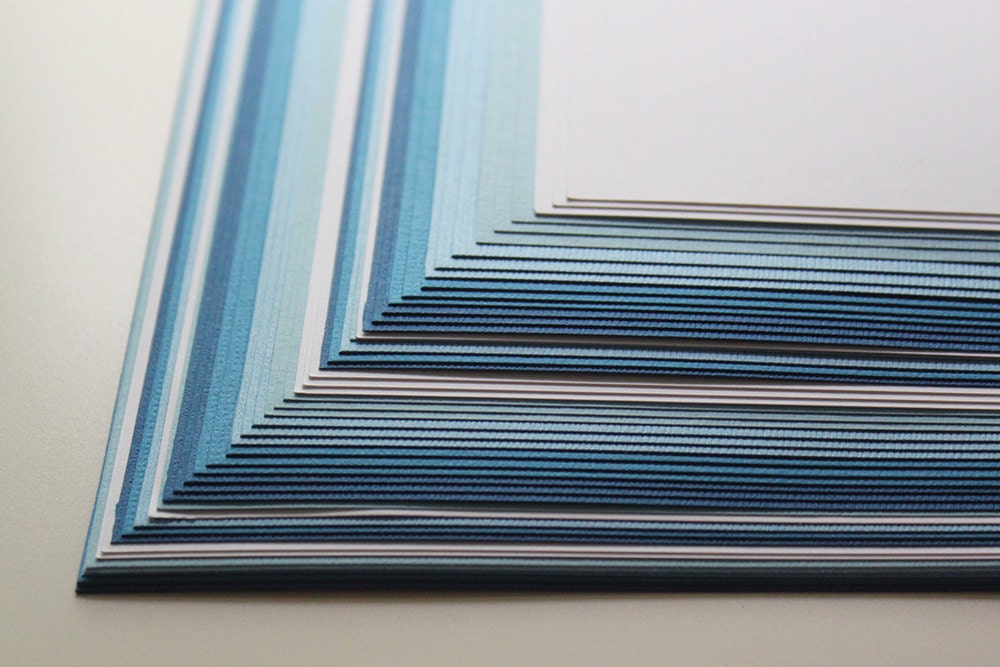
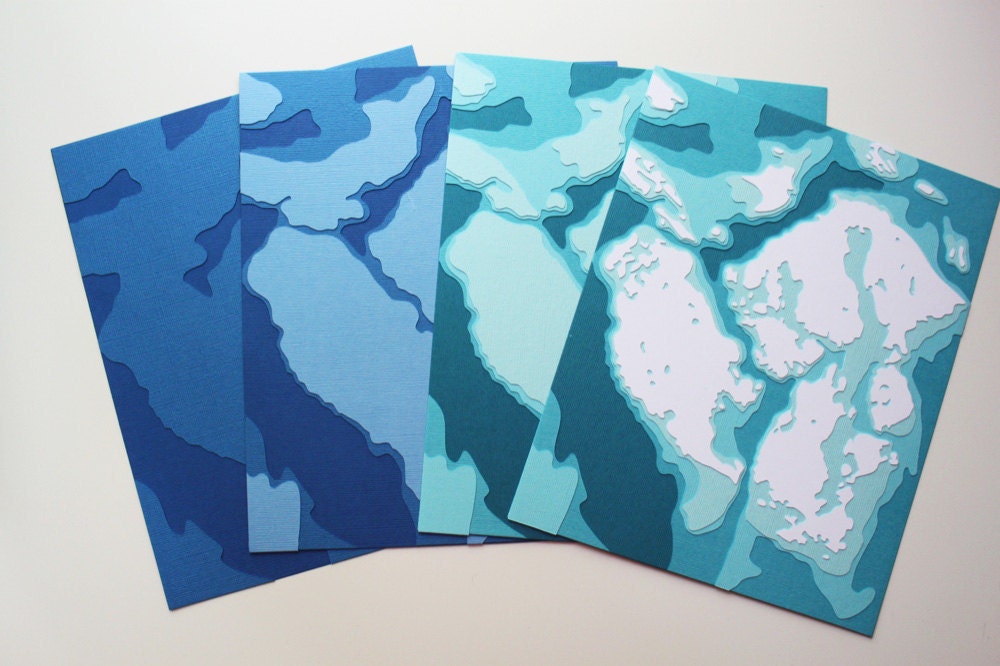
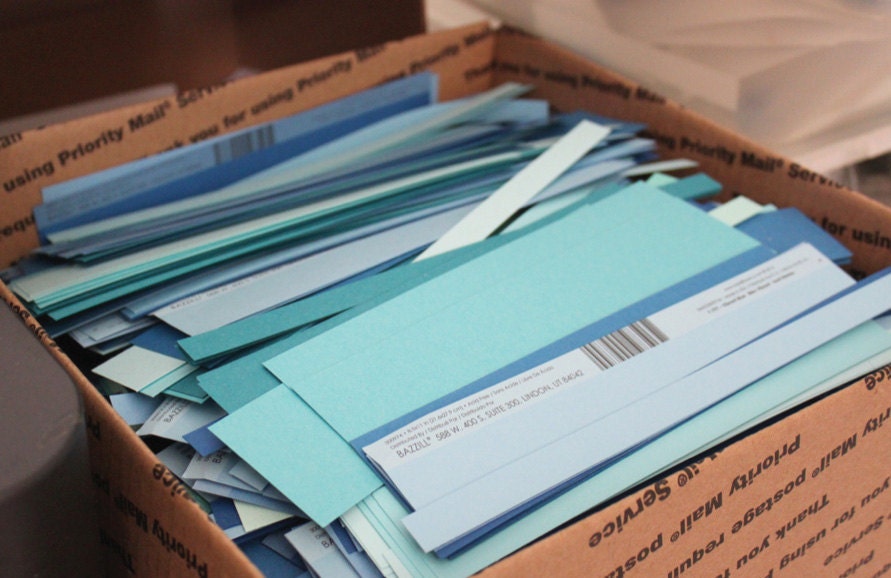
What was your process like for developing those first lake designs, and how is it different now?
It always starts with a map hunt: I'm looking for maps with clear data and all the information I need to make the piece as awesome as I can. They should be detailed, but not so detailed; I'm still working in paper, and as fun and forgiving as it is, it has its limitations. I can't work gradients into the paper. There has to be a cutoff at some point — no pun intended. In the beginning, once I found the right map, I would print it out on my printer, cut it, and flip it over to use as a stencil to trace onto the paper I wanted to cut. That cut piece would be one layer of a five-layer piece. It got to be really labor intensive. Now that I work digitally, I still do one layer at a time, but I don't have to print and stencil every single one. Instead, I use the software that came with my digital color plotter machine to draw and tweak the lines that I want the machine to cut along. Then I place a piece of cardstock onto a carrying sheet and run that through the machine one layer at a time, telling the machine which layer to cut for that particular piece of card stock. I do everything in reverse, so that when it comes out backwards I can lay the adhesive on it and put the next piece of paper on top of that, building up or building down depending on the design.Where do you usually source the maps you use?
99 percent of the time I have to find my data online. Sometimes it ends up embedded at the end of somebody's doctoral dissertation — something they did with the Geological Society or something. Other times it's very readily available through a state's Department of Natural Resources or Fisheries Department, or through NOAA or the U.S. Geological Society. If I can find it online that's the best thing, because it's already on the computer and I can go right from there. Still, every once in a while somebody has to send me a scanned paper map — and once I even worked a piece from a photo taken at a tourist stop.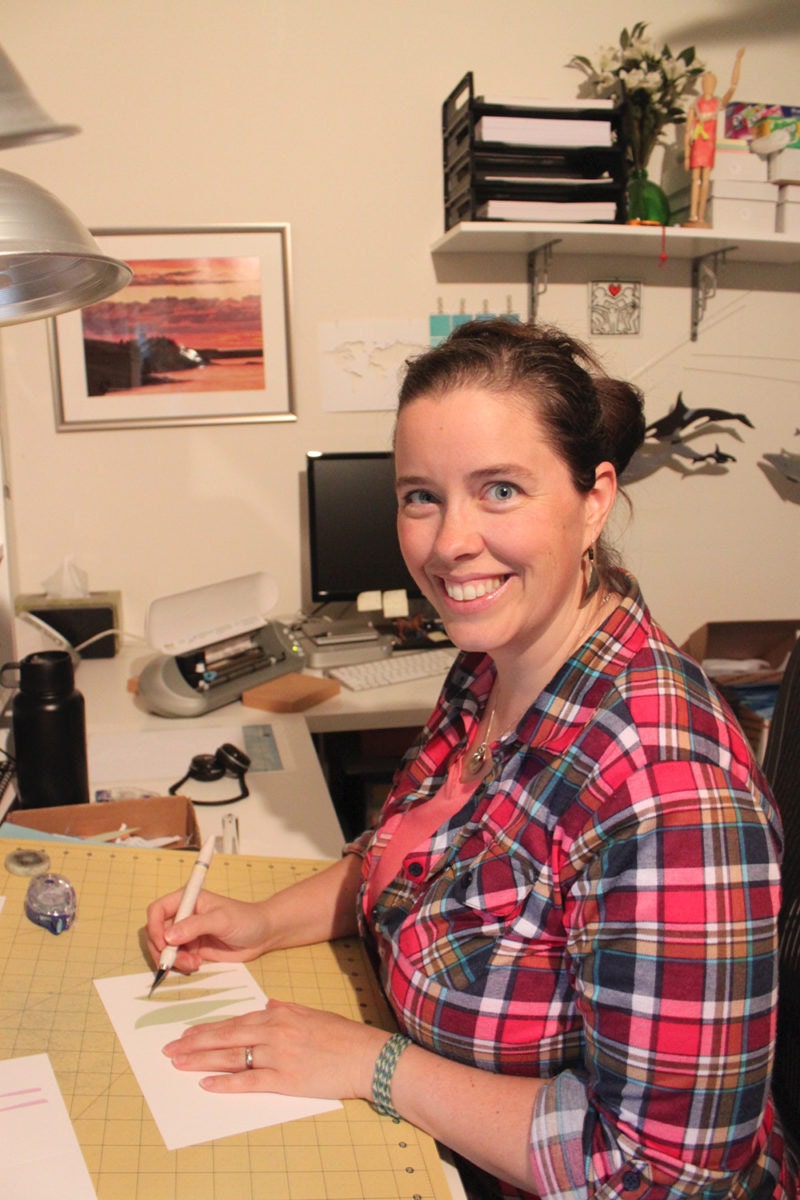
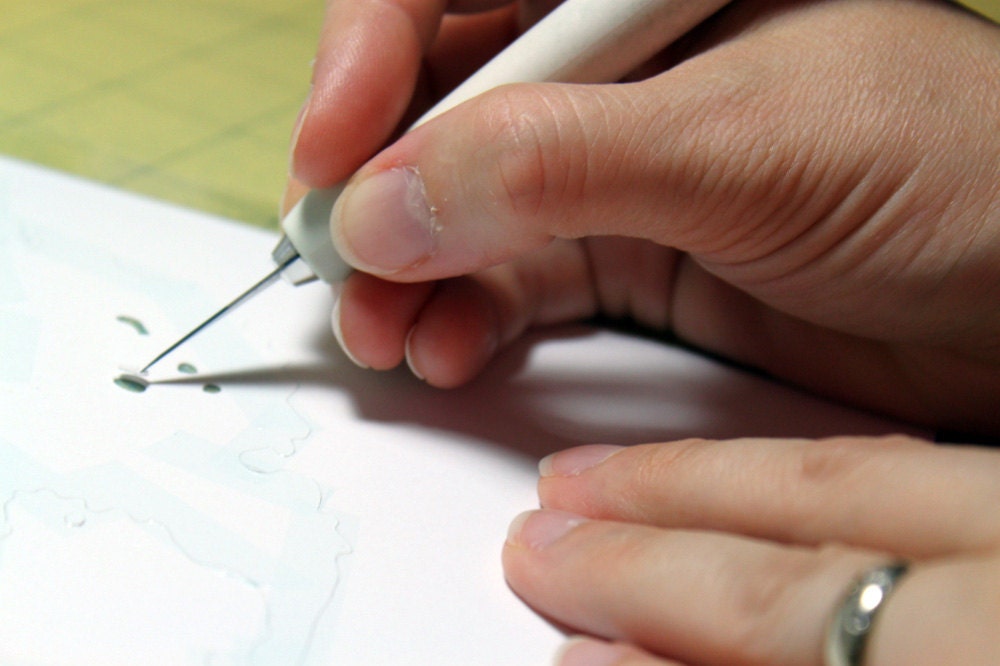
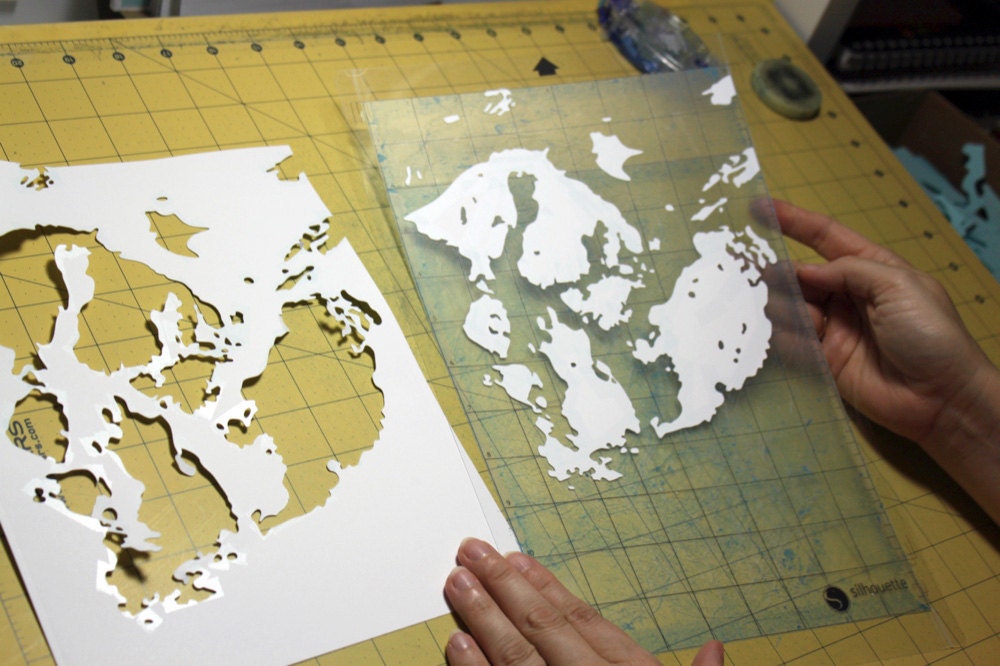

What is the most challenging part of the design process for you?
I think the biggest challenge usually comes in the form of finding workable maps, especially for Canada. Living in Minnesota, we get a lot of Canadian requests — and Canada is full of lakes. It's like one giant Minnesota. But Canada either doesn't have as much data for its lakes or it doesn't share it as readily as the United States does, so it can be really tricky to find the maps I need. That's when I have to become this pseudo-topographical expert, where I take the surrounding land and use that as a hint at what might be happening under the lake. A lot of times, if it's a river reservoir it's basically a continuation of the surrounding topography in the basin. I always ask permission — "I'm going to make up the depth, but I'm going to use this thing as my guide; is that all right?" But really, nobody is going to be the wiser, because if I can't find the map, no one can.And what is the most satisfying or rewarding part of the process?
The immediate reward from working on a challenging piece, or one with an intricate or involved design, is the super complicated, complex, and visually appealing piece that comes out. It's a labor of love, but the fruit that comes out is rich and ripe and sweet and juicy. The most rewarding part of it by far, though, is getting the feedback from buyers saying how beautiful the piece is, or how meaningful it is, or how wonderful it is to have this thing that we co-created that they can hang on their walls or share as a gift. Another part of the design process itself that is rewarding is that I get to be an armchair traveler and explore these places. A lot of times, I'll look up an article or a website about a place just to glean a little bit more information. Sometimes they’ll say things, like, "The deepest portion of the lake is right off Murphy's Corner, and it's been known to harbor eight-foot-long sturgeon," — something super creepy and wonderful. So I get to learn along with working the design — about the area and about the lake and about its history. A lot of lakes around here have very controversial names; they're named after people who were not the nicest people, for example. Or there's a lot of American Indian history associated with the Minnesota lakes and how they were first "discovered," you know. So I geek out about stuff like that.Is there a time in the life of your shop or your business that felt like a big milestone or a breakout moment?
In either late 2008 or early 2009, I got an email from someone who had been browsing Etsy and had come across some of my stuff, and she said that she would like to talk to me about ordering wholesale for the MoMA gift shop in New York. My jaw was on the floor: That was my very first wholesale inquiry ever — and not from some little shop down the road, you know, but MoMA, oh my gosh! It was a super steep learning curve, and I’m so grateful that the person that I worked with from the stationery department at the MoMA gift shop was so down to earth and so willing to work with me, a complete newbie. I had to figure out how I was going to get the materials to make 500 cards and how I was going to package them, and I didn't even know what a bill of lading was, let alone how to create my own that made sense both for me and them. It all really paid off when the daughter of a friend of mine who lived in New York sent them a picture of my cards on the shelf at the MoMA store, saying, "Is this your friend?" And that, too, really sort of brought forth the idea that, Huh, maybe this is what I'm going to be doing. Maybe I won't go back to teaching. Okay...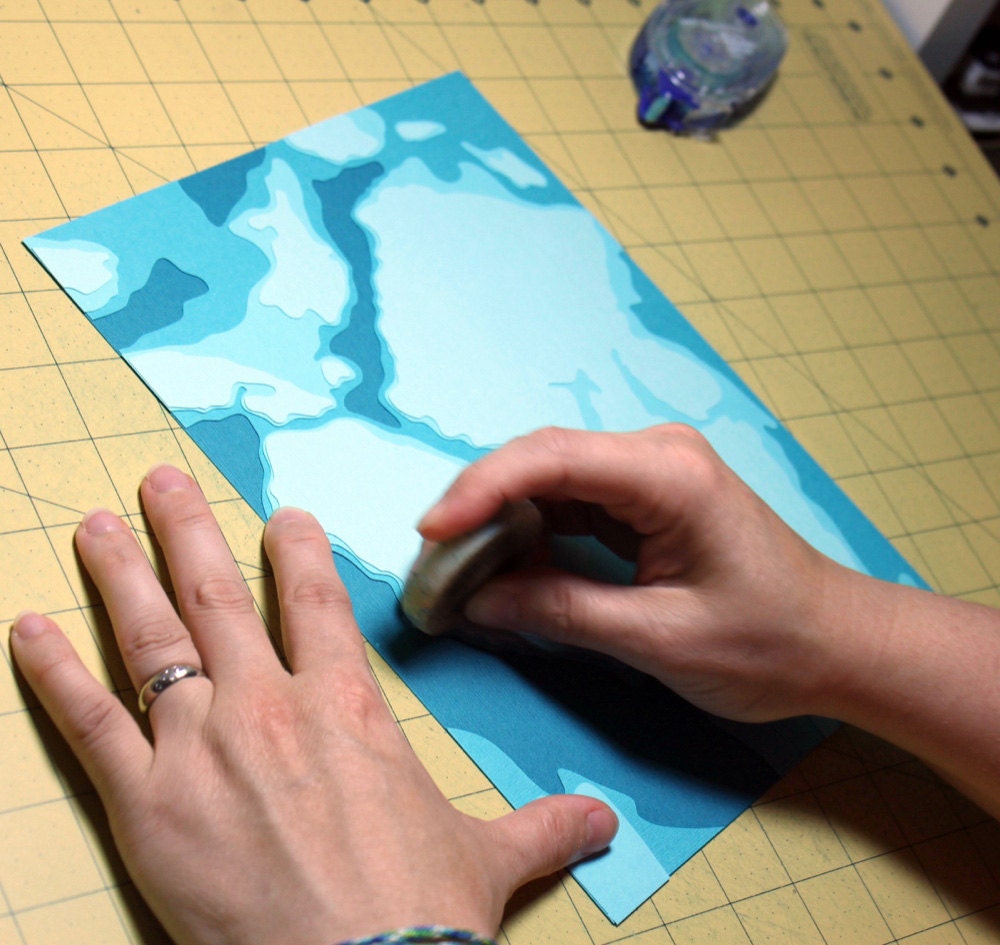
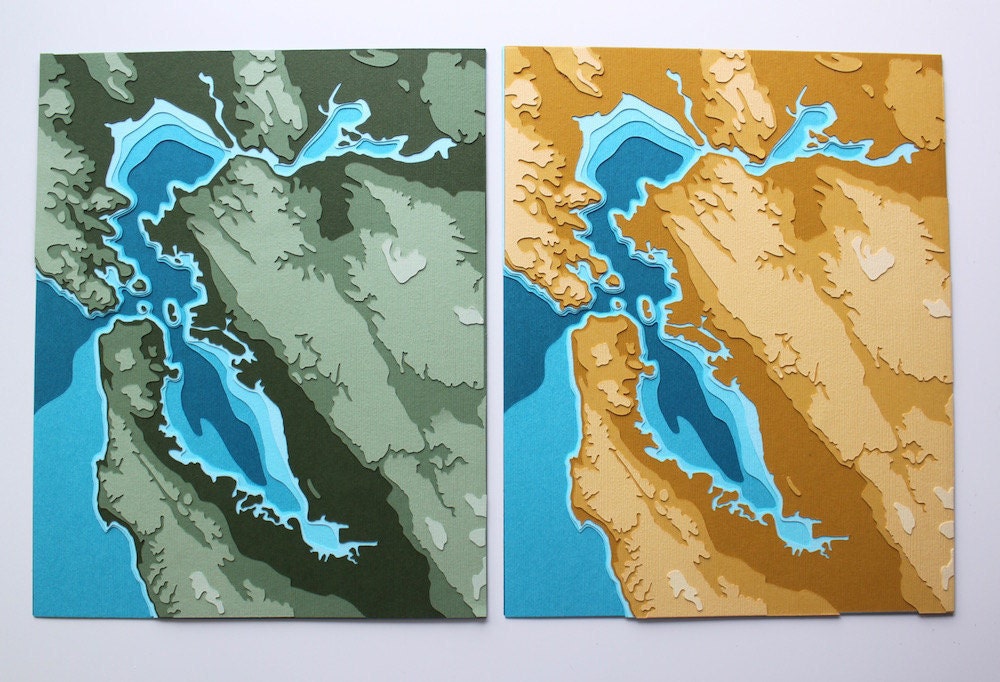
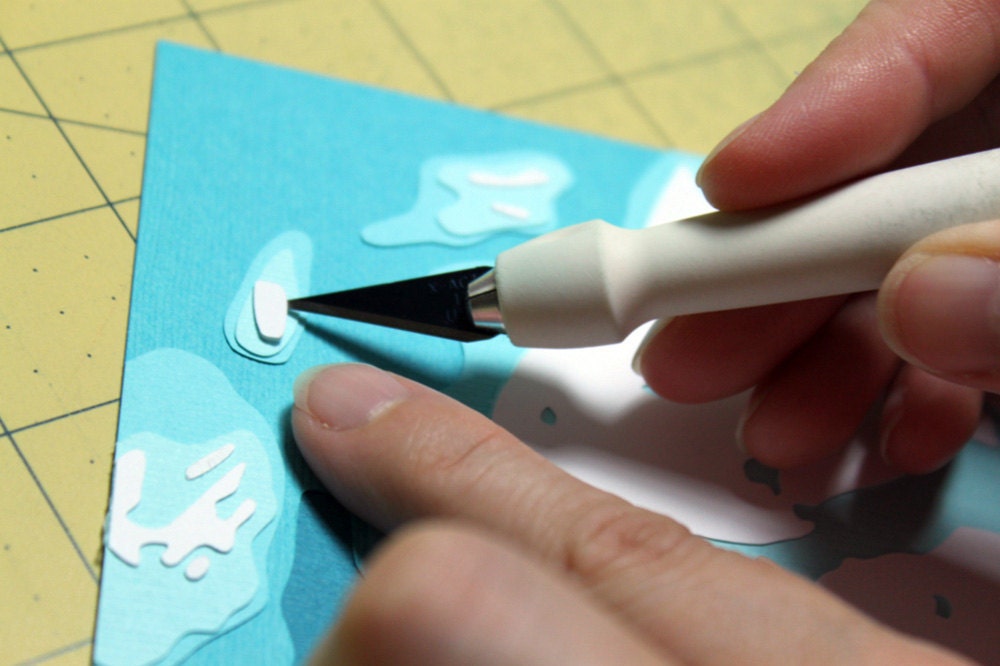
Are you working on anything new for your shop that you're excited about or looking forward to?
I've got this little magnetic mobile over my cutting table here, and it's got all these cool ideas that I've had, some of which have been here for years: I want to make a calendar; I want to make mobiles; I want to make giant wall art that people would piece together themselves, DIY-style. I have these ideas, but I also have this very realistic critic sitting on my shoulder saying, "That probably won't happen." So, yes, I have dreams for doing some super fun things with Crafterall — or even a really scary idea of opening up a second shop with a different theme or direction — but quite honestly, if we talk again next year I think we'll probably just have a very similar conversation.That's perfectly fine! But just for imagination's sake, if you had all the time in the world, what would your next big project be?
I'm really drawn to the idea of larger wall pieces; I'm not totally sure where that would go, but I like the idea of things coming out of the wall somehow. Still being paper, still made of pieces that are accessible, but maybe something out of a piece of cardstock that started as 12" x 12" that gets folded and joined with other pieces to create something stunning for a big wall. This never even occurred to me years ago, because I was never in a place with big walls, but people around here and on Etsy just always ask, "I have this 20-foot wall, and I want something of yours there — what can you do for me?" So I know that there's demand out there, and the idea of expanding into something bigger is where I see myself wanting to go.